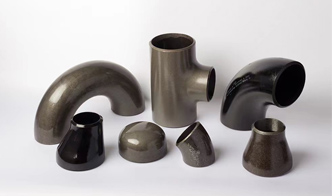Current location:
ss plate flange
Date:2025-08-16 06:54:54 Read(143)

Understanding ASTM A106 B Material A Comprehensive Overview ASTM A106 B is a commonly used material specification in the construction and manufacturing industries, particularly for high-temperature and high-pressure applications. This article delves into the characteristics, properties, applications, and advantages of ASTM A106 B material, providing a comprehensive guide for engineers, designers, and industry professionals. What is ASTM A106 B? ASTM A106 is a specification established by ASTM International, which covers seamless carbon steel pipes designed for high-temperature service. Among its three grades—A, B, and C—Grade B is the most widely used. It offers a balance of strength, ductility, and weldability, making it suitable for various applications where heat and pressure exert significant loads. Chemical Composition The chemical composition of ASTM A106 B is critical to its performance. It generally comprises the following elements - Carbon (C) Up to 0.20% - Manganese (Mn) 0.30% to 0.90% - Phosphorus (P) Maximum 0.04% - Sulfur (S) Maximum 0.05% This composition is designed to provide the necessary strength and thermal resistance for piping systems. Mechanical Properties The mechanical properties of ASTM A106 B material include - Yield Strength Typically around 240 MPa (35 ksi) - Tensile Strength Approximately 400-550 MPa (58-80 ksi) - Elongation Minimum of 20% in 8 inches These properties ensure that the material can withstand the stresses associated with high-temperature environments without significant deformation or failure. astm a106 b material Application Areas ASTM A106 B pipes are used in a variety of industries, including 1. Oil and Gas For transporting steam, water, and gas in refineries and natural gas plants. 2. Power Generation In power plants, these pipes facilitate the transfer of steam and hot water. 3. Chemical Processing Essential for transferring corrosive and non-corrosive fluids in chemical plants. 4. Manufacturing Often found in the production of machinery and equipment that require high-strength piping systems. Given its versatility, ASTM A106 B is a go-to material for piping systems that must endure extreme temperatures and pressures. Advantages of ASTM A106 B 1. High Strength-to-Weight Ratio The material offers excellent strength without excessive weight, ideal for structural applications. 2. Corrosion Resistance While primarily used in carbon steel form, ASTM A106 B can be coated to enhance its corrosion resistance. 3. Weldability This material can be welded using various methods, making it a practical choice for fabricators. 4. Cost-Effectiveness Compared to other materials like stainless steel, ASTM A106 B provides a more economical solution without compromising performance. Inspection and Testing Ensuring the quality of ASTM A106 B pipes is vital, particularly in critical applications. The American Society for Testing and Materials (ASTM) has outlined specific testing requirements, including - Hydrostatic Testing To check for leaks and validate the strength of the pipe. - Mechanical Testing Including tensile tests, bend tests, and impact tests to ensure compliance with the specified standards. - Chemical Analysis To verify the composition of the material aligns with ASTM A106 B specifications. Conclusion ASTM A106 B material is an essential component in various industries, providing reliability, strength, and adaptability for high-demand applications. As industries evolve and technological advancements continue, the significance of such materials cannot be overstated. Its prevalence in oil and gas, chemical processing, and power generation reflects its fundamental role in modern infrastructure. For engineers and designers, understanding ASTM A106 B not only allows for more informed material selection but also ensures that systems are built to last, efficiently handling the challenges posed by high-temperature and high-pressure environments. In a world where standards of safety and performance continue to rise, ASTM A106 B stands out as a trusted choice in carbon steel piping solutions.
Share:
Previous: Efficient Vertical Dewatering Pump Solutions for Enhanced Water Management and Construction Projects
Next: Exploring the Features and Applications of the X60 Pipe in Modern Engineering
Kind tips:The above content and pictures are compiled from the Internet and are for reference only. I hope they will be helpful to you! If there is any infringement, please contact us to delete it!
You may also like
- Exploring the Standards and Guidelines of ANSI B16.47 for Flanged Fittings
- Cost Analysis of Galvanized Pipe for Construction and Plumbing Projects
- Exploring the Dynamics and Applications of Bomba Slurry in Modern Industrial Processes
- Exploring the Benefits of 20% and 202% Galvanized Pipe for Your Projects
- astm b444 uns n06625
- Current Pricing Trends for Stainless Steel Pipe Per Kilogram in the Market
- BS1640 Weld Fittings Overview and Applications for Reliable Connections
- Exploring the Advantages and Uses of 12 Foot Galvanized Steel Pipe in Construction Projects
- Daxili galvanizli boruların istifadəsi və üstünlükləri haqqında məlumatlar